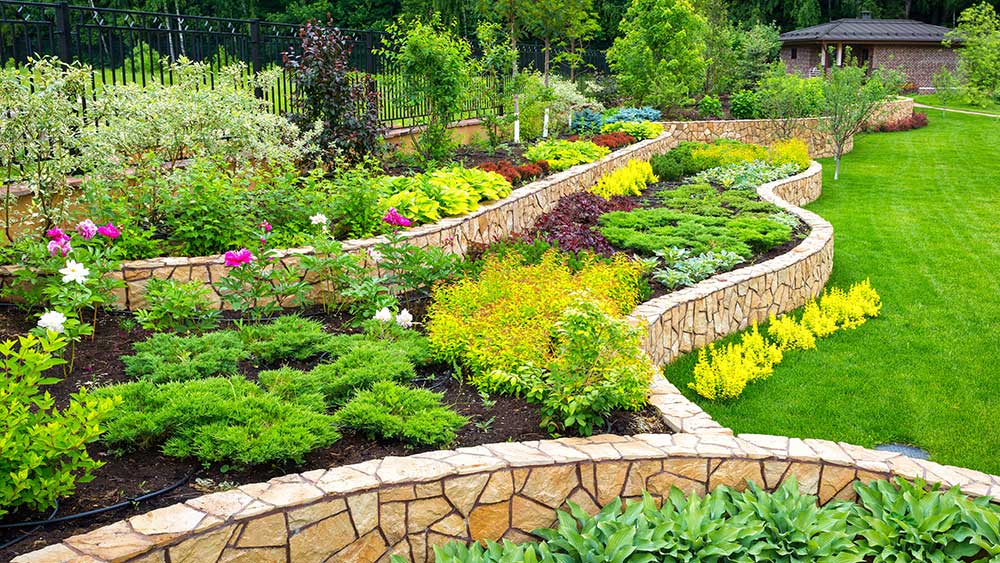What is Sustainable Landscaping?
Sustainable landscaping is a way to design and care for outdoor spaces that help nature instead of harming it. It means using fewer resources, reducing waste, and making choices that protect the environment. This approach helps save water, improves soil health, and creates a better home for birds, bees, and other wildlife Learn More at Homeprof.
Many people think a beautiful yard needs a lot of water, chemicals, and constant care. But with sustainable landscaping, you can have a thriving garden while also protecting nature. It is all about working with the environment instead of against it.
Why is Sustainable Landscaping Important?
Taking care of the earth is everyone’s responsibility. Traditional landscaping often harms the environment by wasting water, polluting the soil with chemicals, and removing natural habitats. Sustainable landscaping helps fix these problems and creates a healthier outdoor space.
One of the biggest benefits is saving water. Many gardens and lawns need a lot of watering, especially in dry areas. But with the right plants and techniques, a yard can stay green with much less water. This not only helps the planet but also lowers water bills.
Another reason to practice sustainable landscaping is to support local wildlife. Birds, butterflies, and bees need plants to survive. By choosing the right flowers, shrubs, and trees, a yard can become a safe and welcoming home for these creatures.
Choosing the Right Plants
One of the best ways to create a sustainable landscape is by using native plants. Native plants are trees, flowers, and shrubs that naturally grow in a certain area. They are already suited to the local climate and soil, so they need less water and care than non-native plants.
Drought-resistant plants are another great choice. These plants can survive with little water, making them perfect for areas that do not get much rain. Some examples include lavender, succulents, and certain grasses.
Planting a mix of flowers and trees can also help. Different plants bloom in different seasons, providing food for bees and butterflies all year long. Trees offer shade, which helps keep the yard cool in the summer.
Water Conservation Techniques
Water is a precious resource, and saving it is an important part of sustainable landscaping. One way to use less water is by installing a drip irrigation system. Unlike traditional sprinklers, which spray water everywhere, drip irrigation delivers water directly to the roots of plants. This reduces waste and helps plants grow stronger.
Rainwater harvesting is another good idea. Collecting rainwater in barrels allows homeowners to use free water for their gardens. This is especially helpful in dry areas where water is limited.
Mulching is another way to conserve water. Spreading mulch around plants keeps the soil moist, so less watering is needed. Mulch also helps prevent weeds from growing, which makes yard maintenance easier.
Reducing Chemical Use
Many fertilizers and pesticides contain harmful chemicals that can pollute the soil and water. Instead of using these, sustainable landscaping focuses on natural ways to keep plants healthy.
Composting is a great alternative to chemical fertilizers. It turns food scraps and yard waste into nutrient-rich soil. This improves plant growth without harming the environment.
Using natural pest control methods is another smart choice. Certain plants, like marigolds, keep pests away naturally. Ladybugs and praying mantises are also helpful because they eat harmful insects.

Creating Wildlife-Friendly Spaces
A sustainable landscape is not just good for people; it is also a safe place for animals. Birds, butterflies, and bees all play important roles in nature, and a well-planned yard can help them thrive.
Planting a variety of flowers provides nectar for pollinators like bees and hummingbirds. Adding birdhouses and feeders can attract different bird species, making the yard more lively and beautiful.
Leaving some natural areas in the yard also helps. A pile of leaves or a fallen log can be a home for insects and small animals. Instead of removing every wild plant, letting some grow can support local wildlife.
Using Sustainable Materials
Many people do not realize that the materials used in a yard also affect the environment. Choosing eco-friendly materials can make a big difference.
Recycled materials, such as reclaimed wood or old bricks, can be used to build garden paths, fences, or seating areas. Permeable pavers are another great option. Unlike concrete, which traps water, permeable pavers let rainwater soak into the ground, reducing runoff and flooding.
Maintaining a Sustainable Yard
A sustainable landscape needs proper care to stay healthy. Regularly checking plants for signs of disease or pests can prevent bigger problems. Pruning trees and shrubs helps them grow better while keeping the yard neat.
Leaving grass clippings on the lawn instead of throwing them away is another simple way to improve soil health. This adds nutrients back to the ground and reduces the need for chemical fertilizers.
Using energy-efficient tools, such as electric or hand-powered mowers, also helps. Gas-powered tools create pollution, so choosing cleaner options is better for the environment.
The Future of Sustainable Landscaping
More people are realizing the importance of protecting the environment, and sustainable landscaping is becoming more popular. Cities and communities are encouraging homeowners to adopt eco-friendly practices, and some even offer rewards for using less water or planting native plants.
By making small changes, anyone can create a more sustainable yard. Whether it is planting native flowers, using less water, or avoiding chemicals, every step helps. A greener future starts with simple choices, and sustainable landscaping is a great way to make a difference.
A beautiful yard does not have to harm the planet. By working with nature instead of against it, homeowners can enjoy a thriving garden while protecting the environment. Sustainable landscaping is not just a trend; it is a smart and responsible way to care for outdoor spaces.






